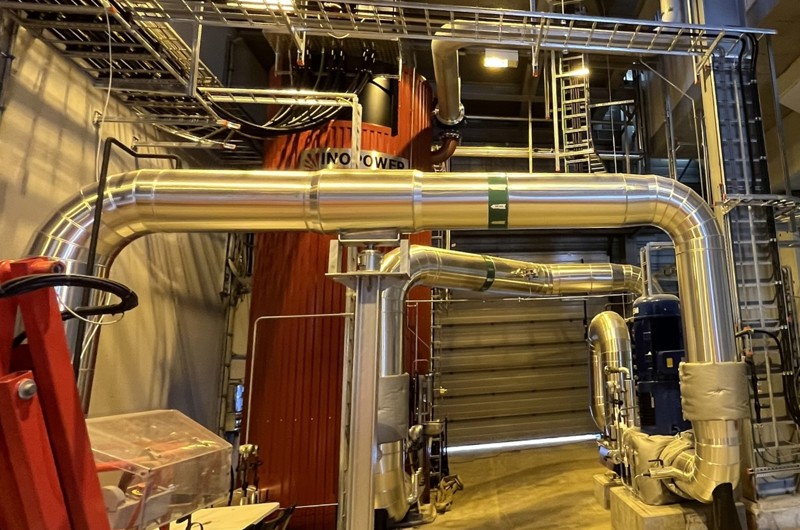Hillerød Utility has taken a major step forward in the green transition. A new 50 MW electric boiler at the Hillerød Energy Central now supplies large volumes of fossil-free district heating, reducing the use of biomass and supporting Denmark’s energy transition.
29 September 2025 | By Kim Vejrup
This summer, the utility was able to shut down its large biomass CHP plant entirely and rely instead on the new electric boiler for heat production. The boiler covered around 50% of the total district heating demand in the summer months – heat that would otherwise have been produced with wood chips.
Saving fuel and reducing emissions
By shifting production to the electric boiler, Hillerød Utility saved approximately 8,000 tons of wood chips over the summer.
“With this new facility, we now have another fossil-free energy source in our heat production mix. It not only benefits the environment, it also strengthens security of supply,” says Tue Tortzen, Chairman of the Board at Hillerød Utility.
The electric boiler stands 7.6 meters tall, holds 15,000 liters of water, and has the capacity equivalent to 25,000 household electric kettles.
Flexible use of electricity
The boiler is connected to the national grid as a reserve load. This means it absorbs excess electricity when supply is high, helping balance the power grid, and shuts down when electricity is in short supply. For providing this service, Hillerød Utility receives an availability payment – whether the boiler is running or not.
The timing of heat production also makes it highly cost-effective. The boiler only operates when electricity prices are low, producing heat at a lower cost than traditional biomass. Combined with availability payments, this helps keep heating prices stable for customers.
“Households that rely on oil or gas feel the daily price fluctuations directly. In district heating, we can stabilize prices by combining different energy sources and purchasing fuels in bulk at the right time. That’s why district heating is not only greener but also more affordable in the long run,” explains Tue Tortzen.
A stronger role in the future
Currently, the boiler is running at about 18 MW out of its 50 MW capacity – just one third of its potential – due to limited capacity in the electricity grid.
“It’s a pity we can’t run it at full power yet, because it has huge potential to reduce both fossil fuels and biomass use. But what we see already is very promising. With more grid capacity in the future, this technology will play a major role in ensuring fossil-free heat production,” says Tortzen.
________________________________________
Key benefits of the electric boiler in Hillerød:
- Saves thousands of tons of biomass each year
- Supports the electricity grid by using surplus renewable power
- Stabilizes district heating prices for consumers
- Strengthens long-term security of supply
- Brings Denmark closer to fossil-free district heating
Article translated from the Danish District Heating Association’s website
 Curious to learn more?
Curious to learn more?
You can find all our district energy news here.
